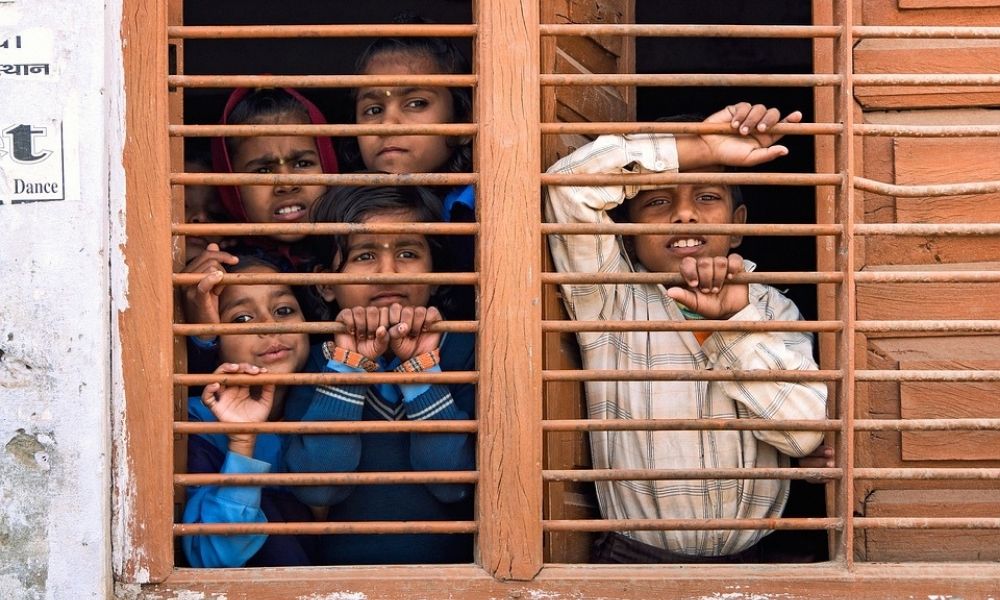
Image Credit: Pixabay
Gender Disparities In Classrooms Have A Lasting Impact
India, 29 July 2021 2:25 PM GMT | Updated 29 July 2021 2:28 PM GMT
Editor : Madhusree Goswami |
A mountain girl trying to make it big in the city. She loves to travel and explore and hence keen on doing on-ground stories. Giving the crux of the matter through her editing skills is her way to pay back the journalism its due credit.
Creatives : Ratika Rana
Her primary objective is to inform, promote, educate and cultivate readers through writing.
India is a deeply stratified society and has its own notion of do's and do not's. The segregation begins right at the primary level of education and impacts the growth of an individual for the rest of their lives.
Primary education is the foundation of learning for any individual. The Beijing Platform for Action adopted in 1995 emphasised the pervasiveness and the assurance of completion of primary education for all children as one of the critical concerns. Over the last two-and-a-half decades, considerable progress has been made to reach gender parity in primary education. However, certain African, South Asian and Middle Eastern countries are still lagging behind as the system tends to favour girls over boys. Gender parity is calculated on the ratio of the number of girls enrolled in primary education as compared to the number of boys.
Students Navigate Their Gender Roles
Primary schooling can revolutionise a child's social behaviour. It helps them make sense out of the world around them by observing adults around them. The onus is on the schools to teach students and create an environment in which a child feels comfortable exploring their own gender identity. Even though gender development is a natural process, educators can play a vital role by encouraging gender inclusivity amongst young children. Students learn to navigate their gender roles through their behaviour, attitude and expectations for males and females. Teachers can sometimes consciously or unconsciously influence the differences in gender roles through their responses and choices on behalf of children. For instance, teachers tend to assign roles and responsibilities to students based on their gender.
In primary schools, especially in rural areas, teachers tend to punish both boys and girls differently. Sometimes, they tend to penalise one gender for not performing up to the mark severely, and the other gender might be let loose for a similar performance. For instance, generations together have lived by the notion that men have to be successful to earn for their family and thus, they require a better education. Therefore, teachers might punish boys but not reprimand the girls for not studying. This would build pressure on the boys. Thus, the gender gap in education widens.
According to the Ministry of Women and Child Development, the average dropout rate for girls in elementary education was 4.74 per cent in elementary school and 17.3 per cent after secondary school. It means that more than 17 girls out of 100 drop out of the education system after completing their secondary education. At this stage, traditional norms push girls to take a step back and help in household chores and be available for sibling care. An Annual Status of Education Report (ASER) mentioned that people tend to spend more money on boys' education than on girls', which is why the enrollment rate of boys is more in private schools while more girls enrol in government schools for primary education. These decisions by the family and teachers can have a lasting impact on girl children as they would think that having a career is not as much a need for them as it is for their brothers.
Obstacles Increase As Girls Begin To Menstruate
The obstacles in gender-based education grow manifold as girls begin to menstruate. Lack of sanitation facilities for them adds to the already challenging puberty and hormonal changes girls face. Since government schools in semi-developed areas lack separate washrooms for girls, they share a common one with males. This risks their privacy, ultimately leading to girl students dropping out of school. Apart from the need for having a toilet, there is a need for cleanliness in those washrooms. The lack of such facilities leads to increasing health problems like Urinary Tract Infection (UTI). A majority of 52 per cent of the female population suffers from a lack of safe sanitary products.
In government and private schools, separate classes are organised exclusively for girls attaining puberty to make them aware of menstrual hygiene and proper use of sanitary napkins. Instead of making it a hush-hush topic to discuss, including both boys and girls in such orientations would be more progressive. Natural phenomena like menstruation, growth of certain areas in the body, the appearance of better-refined body hair, and facial hair appearance should be discussed extensively and normalised. It is appalling to see that such everyday things are still considered taboo in Indian society.
Even though women represent the country in international sporting events, seeing girls from rural areas participating in 'masculine' games is a rare sight. To attain world-class players in all kinds of sports, training of that level is mandatory at the grassroots levels. Sports is one arena that brings together people, ignoring their gender, social background and financial conditions. Football, cricket, boxing and the like do not differentiate based on gender. Therefore, the perception of discriminating between players should find an end too.
Need For Better, More Inclusive Education System
The onus of taking initiatives for a better and more inclusive education system lies in the government. First and foremost, a roadmap should be created to make teachers more conscious and aware of what they speak in classes. This is all the more important for primary teachers because students tend to view their teachers as role models and act to imbibe all they preach. Notions formed in childhood are deep-rooted and difficult to change. Making young girls confident in their skin is the most basic feeling that must be inculcated to make sensitive and practical young women of tomorrow.
Primary school is the stepping stone in a child's life. To make able custodians of tomorrow, we must provide facilities. The teachers would have to adopt more dynamic teaching methods to adapt to the social changes. Teaching the way one was taught is always the easy way out. We cannot ignore the subtle gender disparities in our education system and textbooks. If the existing system shaped out of stereotypes, beliefs, and bias does not change, the education system fails to educate children to face the real world. Studies show that India will reach the goal of universal enrollment at the current rate of progress but would struggle to retain its students.
Also Read: How Indore Went From Being The Garbage Capital To The Cleanest City In India
 All section
All section














